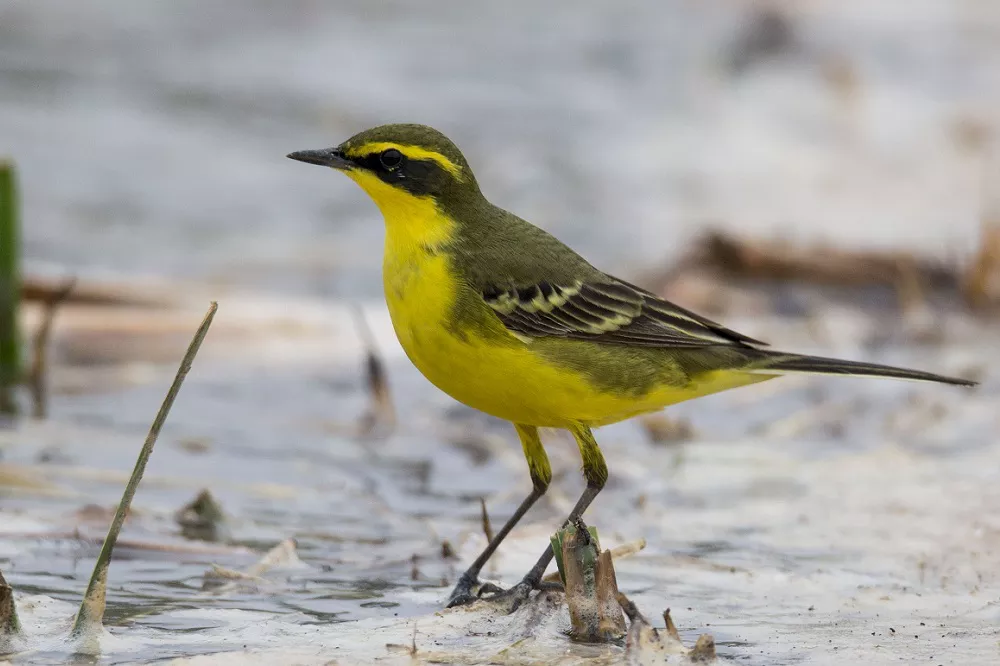Yellow wagtails are small passerine birds that belong to the family Motacillidae. They are migratory birds that breed in Europe and Asia and winter in Africa. Yellow wagtails are named for their bright yellow plumage, which is most prominent in breeding males. Females and juveniles have less vibrant yellow plumage, often with streaks of brown or grey. These birds are typically found in open areas near water, such as meadows, marshes, and wetlands. They feed on insects, especially flies, as well as seeds and small aquatic invertebrates.
Physical Appearance
The yellow wagtail has a distinctive appearance that makes it easy to identify. These birds have a bright yellow underside with streaks of black on the breast and flanks. The upperparts are olive-green in color while the wings are dark brown. They have a pale supercilium (eyebrow) and a black eye stripe that extends from the base of the bill to the nape of the neck. The bill is slender and pointed, and the legs are pinkish-brown.
Male and Female Differences
There are no significant differences between male and female yellow wagtails in terms of physical appearance. However, males tend to be slightly larger than females, and they often have brighter yellow plumage during the breeding season.
Juvenile Plumage
Juvenile yellow wagtails have a duller coloration than adults. They have a brownish-gray head and back, and their underparts are pale yellow with less distinct streaking. The eye stripe is also less pronounced in juveniles.
Variations in Subspecies
There are several subspecies of yellow wagtails, and some of them have variations in plumage. For example, the British race, M. f. flavissima, has a much brighter yellow coloration than other European races. The eastern race, M. f. tschutschensis, has a darker green upperpart and more extensive black streaking on the breast and flanks.
Habitat and Distribution
Yellow wagtails are migratory birds that breed in Europe and Asia and winter in Africa. They prefer open habitats such as riverbanks, meadows, marshes, and fields. In the winter, they can be found in a variety of habitats, including wetlands, savannas, and farmlands.
Behavior
Yellow wagtails are active and agile birds that are often seen running and hopping on the ground while searching for food. They feed on a variety of insects, including flies, beetles, and caterpillars. During the breeding season, males perform elaborate courtship displays by flying up and down while singing.
Conservation Status
The yellow wagtail is classified as a species of Least Concern by the International Union for Conservation of Nature (IUCN). However, some populations have declined due to habitat loss and degradation. In particular, the British race, M. f. flavissima, has experienced declines due to changes in agricultural practices and the loss of grassland habitats.
Conclusion
Yellow wagtails are beautiful and distinctive birds that are easily recognized by their bright yellow plumage and black eye stripe. These birds are active and agile and are often seen running and hopping on the ground while searching for food. Although the yellow wagtail is currently classified as a species of Least Concern, some populations have declined due to habitat loss and degradation.


 Facebook
Facebook  Instagram
Instagram  Youtube
Youtube 